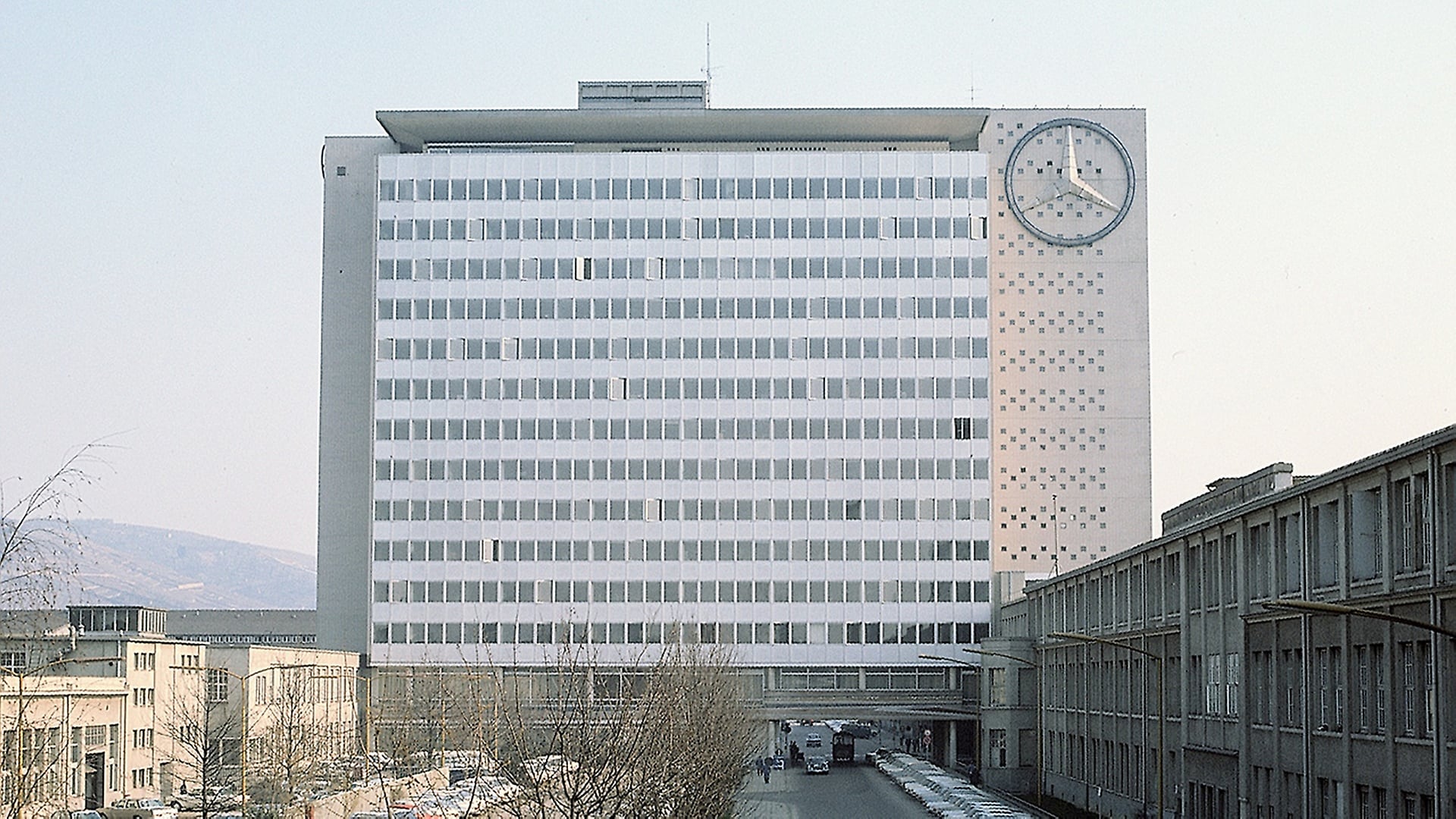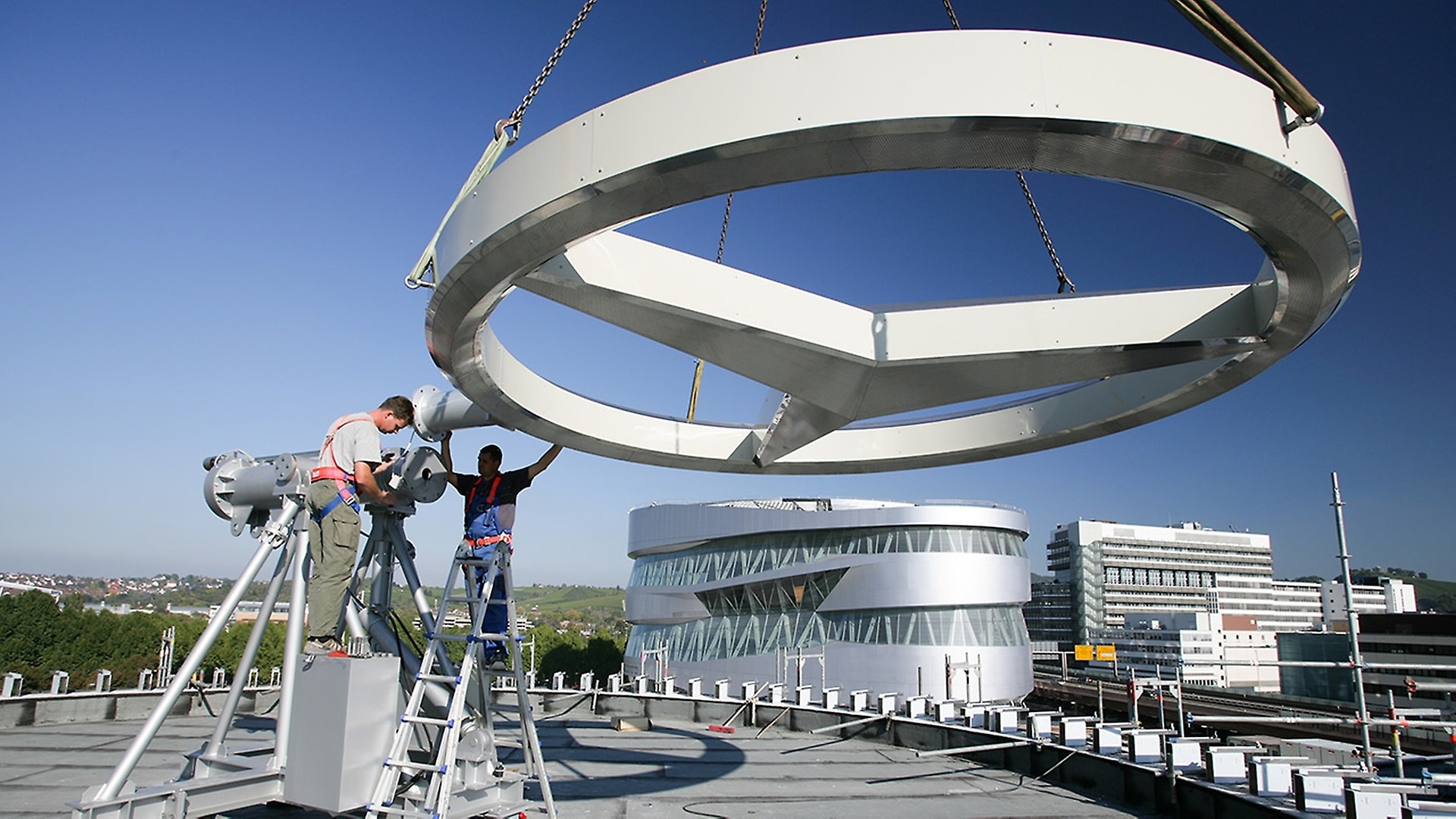Twinkle, twinkle, little star. How I wonder what you are!
,xPosition=0,yPosition=0.5)
The Mercedes Star Shines Every Day
Mercedes-Benz AG
Mercedesstraße 120
70372 Stuttgart
Germany
Phone: +49 7 11 17-0
E-Mail: dialog@mercedes-benz.com
Please send queries about content on this website to any contact. You can address your concerns to us in English and your respective national language.
Represented by the Board of Management:
Ola Källenius, Chairman; Jörg Burzer, Renata Jungo Brüngger, Mathias Geisen, Markus Schäfer, Olaf Schick, Britta Seeger, Oliver Thöne, Harald Wilhelm
Chairman of the Supervisory Board: Martin Brudermüller
Court of Registry: Stuttgart; commercial register no. 762873
VAT ID: DE 32 12 81 763
All information about our products can be found on your country-specific Mercedes-Benz product page.
,xPosition=0,yPosition=0.5)
The Mercedes Star Shines Every Day
Twinkle, twinkle, little star. How I wonder what you are!
Author: Sven Sattler
I admit that I actually wanted to start this text by reciting the entire first verse of this lullaby. But honestly: I had to use Google to make sure that the verses I knew by heart back in kindergarten have survived over all those years. And if you (just like me) happen to be not quite sure how the lyrics continue – this is what Google (and the dimly lit part of my brain) came up with:
Up above the world so high,
Like a diamond in the sky.

Now that Christmas is near, stars are shining everywhere: they’re lighting up suburban houses as well as supersized trees and pedestrian zones. But no matter what time of the year it is: The brand that Daimler is most famous for produces shiny eyes and shiny stars every day – even during the hottest days of summer. And that’s a tradition: The story of our star can be traced back to the early twentieth century.
An application for utility-model protection for the three-pointed star was submitted on June 24, 1909 — almost exactly 17 years before the merger of Daimler-Motoren-Gesellschaft and Benz & Cie. And because the star is older than the merger of Mercedes and Benz, this symbol consequently is still known today as the “Mercedes star” rather than the “Mercedes-Benz star.”

It’s no mistake to say: Mercedes-Benz has been guided by a lucky star for close to 110 years. Today our star graces cars, trucks, buses, vans, and many other products and accessories. And just like the first verses of Twinkle, Twinkle, little star almost every child knows the brand’s striking symbol.
The three-pointed star stands for premium vehicles and top quality all over the world, and it has surely helped to keep Mercedes-Benz on the Top Ten list of the world’s most valuable brands. Wordplay and jokes alluding to the Mercedes star seem to never go out of fashion. Whenever Mercedes-Benz announces a new sales record, on the following day at least one newspaper will inevitably print the headline “Mercedes reaches for the stars.”
Whenever the first vehicle of a new model series rolls off the assembly line, the headlines read “a new Star is born.” And of course the melodious voices of the Daimler Chorus of Stuttgart belong to the approximately 90 “Star Singers.” I wish that this Christmas I could swear to never again use any of those silly puns again. But I don’t want to make any promises I’m not likely to keep. So, let me instead share this corny joke with you – hoping that it will remind you of what you likely will see right in front of your favourite supermarket just before Christmas dinner:
How do you call it when two Mercedes drivers argue over the last free parking spot? – Star Wars.
For quite a while now, our three-pointed star has been far more than just a hood ornament. And in the year 2018 A.D., you don’t have to travel as far as Bethlehem in order to see it shining somewhere in the night sky. Brightly illuminated rotating Mercedes stars can be seen all over the world. They highlight many Mercedes-Benz locations as well as a number of high-rises where you can’t actually buy a new car.

In fact, it wouldn’t be possible to count them all. Not even Daimler’s own “Star Man,” Ralf Gaubatz, knows the exact number. He works in the department that’s in charge of Mercedes-Benz’ brand image and brand architecture. More precisely, he monitors compliance with the worldwide standards for the technical equipment of Mercedes-Benz branch offices and dealerships. And the Mercedes stars on roofs and towers are obviously a key element of our company’s brand image.
All that Ralf Gaubatz can say for sure is that at least 600 Mercedes stars are shining on high worldwide. This is because the company has only been systematically keeping track of the stars in the Mercedes-Benz galaxy since 1990. A comprehensive overview of stars that started to shine earlier doesn’t exist — and the oldest rotating stars went into service long before 1990. The famous one on top of Stuttgart’s central train station (diameter: five meters) has been there since 1952. And the famous star on top of the Europa-Center in Berlin has been spinning around its own axis since 1965. Not long after that, it became a brilliant symbol of the West.

Today – over fifty years later – many people still regard it, together with KaDeWe and The Kaiser Wilhelm Memorial Church, as symbols of the old West Berlin. Because of a fire at the Europa-Center in 2016, the Mercedes star on top of the building temporarily stood still. When it started to rotate again, the Tagesspiegel, one of Berlin’s most-read papers, considered it headline news: Der Stern dreht sich wieder (The Star Is Turning Again).
The article’s most important message was a big relief for many Berliners: The Mercedes star had not been damaged in the fire, it only stood still because the electricity was turned off during the firefighting operations. And a few soot marks were cleaned off during the following days. Phew, that was close! From a global perspective, the star in Berlin actually is a very special part of the Mercedes universe: It’s one of only two rotating stars worldwide with a diameter of ten meters. Its twin star twinkles on the roof of the Daimler Tower in Beijing.

While these megastars are rare, the smaller variants continue to be very popular – star towers come in diameters of three, four or five meters; rotating stars come in eleven different variants, with diameters between two and ten meters. In 2018 alone, 84 new stars were born on roofs and towers worldwide. The harder to believe it is that in 1995 a ban on stars was broadcast from Stuttgart into the Mercedes galaxy. Back then, word went out that the eye-catching stars should only be used for the sales outlets designated as Mercedes-Benz Centers. In the late 1990s, however, the Center concept was changed — and the star ban was finally lifted in 1999.
Thus there’s a very good chance that still more new stars will be born in the new year — in other words, after the holidays (during which even confirmed Mercedes aficionados grant Christmas stars and cinnamon stars a higher priority than our trademark). So, may the stars twinkle again for all of you in 2019!